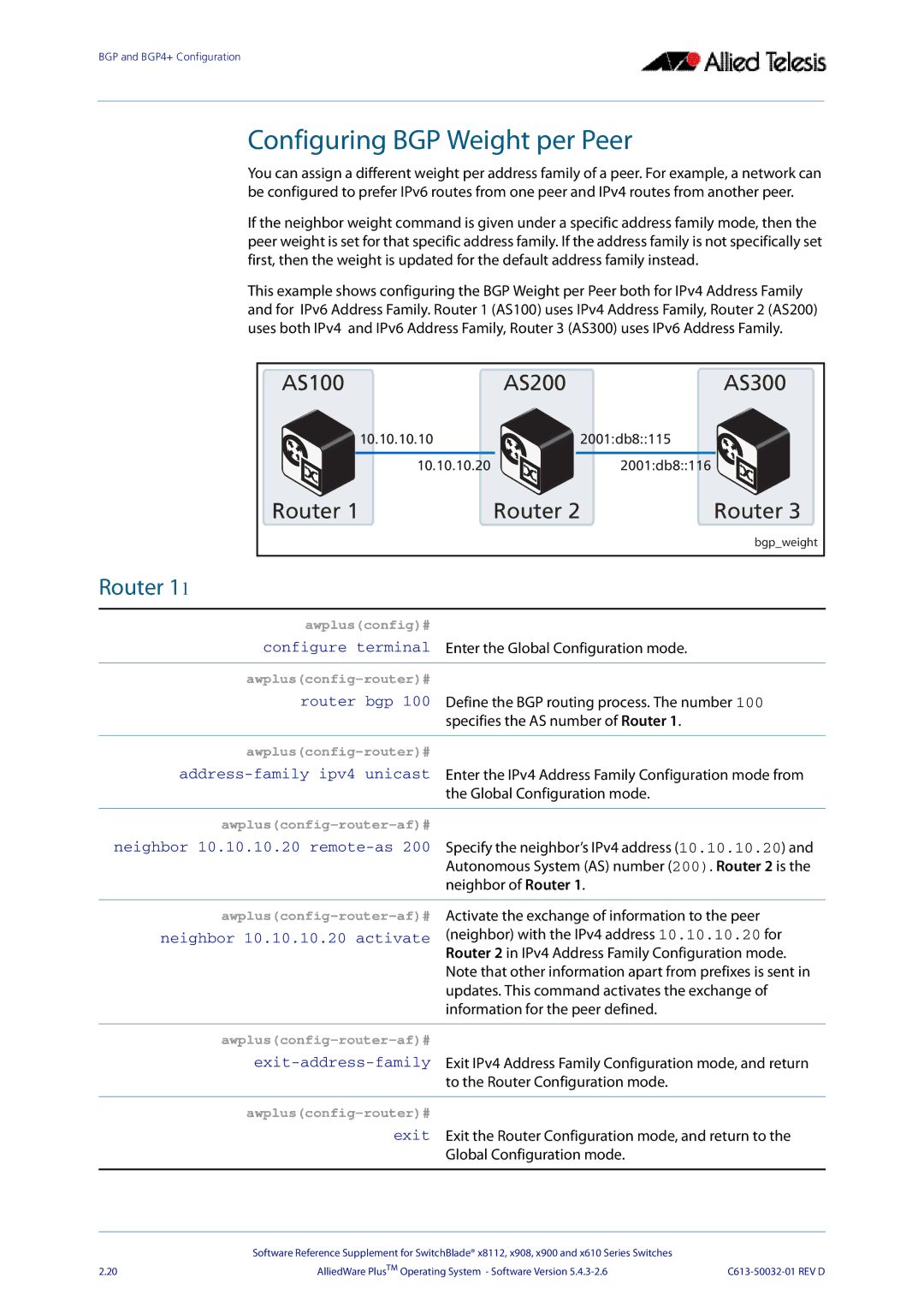
BGP and BGP4+ Configuration
Configuring BGP Weight per Peer
You can assign a different weight per address family of a peer. For example, a network can be configured to prefer IPv6 routes from one peer and IPv4 routes from another peer.
If the neighbor weight command is given under a specific address family mode, then the peer weight is set for that specific address family. If the address family is not specifically set first, then the weight is updated for the default address family instead.
This example shows configuring the BGP Weight per Peer both for IPv4 Address Family and for IPv6 Address Family. Router 1 (AS100) uses IPv4 Address Family, Router 2 (AS200) uses both IPv4 and IPv6 Address Family, Router 3 (AS300) uses IPv6 Address Family.
AS100 | AS200 | AS300 |
10.10.10.10 | 2001:db8::115 |
|
10.10.10.20 | 2001:db8::116 |
|
Router 1 | Router 2 | Router 3 |
|
| bgp_weight |
Router 11
awplus(config)#
configure terminal Enter the Global Configuration mode.
awplus(config-router)#
router bgp 100 Define the BGP routing process. The number 100 specifies the AS number of Router 1.
awplus(config-router)#
awplus(config-router-af)#
neighbor 10.10.10.20
awplus(config-router-af)#
neighbor 10.10.10.20 activate
Activate the exchange of information to the peer (neighbor) with the IPv4 address 10.10.10.20 for Router 2 in IPv4 Address Family Configuration mode. Note that other information apart from prefixes is sent in updates. This command activates the exchange of information for the peer defined.
awplus(config-router-af)#
awplus(config-router)#
exit Exit the Router Configuration mode, and return to the Global Configuration mode.
| Software Reference Supplement for SwitchBlade® x8112, x908, x900 and x610 Series Switches |
|
2.20 | AlliedWare PlusTM Operating System - Software Version |
